Staying Healthy During the Season of Cold, RSV, Flu & Norovirus
Cold, Flu, Norovirus, and RSV Prevention
The outbreaks of the cold, flu, COVID, RSV (Respiratory Syncytial Virus) and Norovirus have made headlines nationwide. This season has seen a peak in all infections across the U.S.
Ensuring the health of our students, employees, and customers is our top priority. Facility management plays a crucial role in maintaining a safe and healthy environment for working, learning, and continuing our daily routines. By implementing proper cleaning strategies, using the right supplies, and providing expert training and educational tools, we can help protect our building occupants against this season's viral trifecta.
With all three viral pathogens in circulation this flu season, helping your building occupants avoid getting sick is more important than ever. At first glance, this may seem like a daunting task given the seasonal “tridemic” on the rise, but with these six steps you can help prevent the spread of the flu, RSV and norovirus.

6 Steps to Building Occupant Wellness
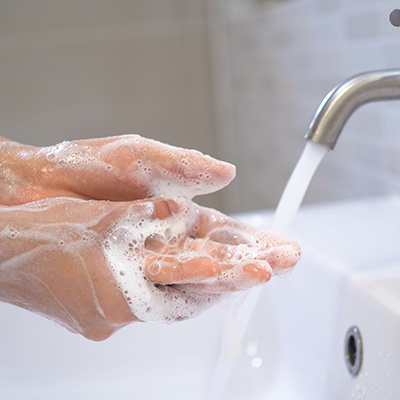
Step 1: Enhanced Hand Hygiene Solutions
80% of all infectious diseases are spread by touch – clean hands save lives and create a healthier building environment.
Encourage your building occupants to practice the 1-2-3 of Hand Hygiene, which is:
- Wash hands with soap and clean water
- Dry hands with clean paper hand towels
- Apply hand sanitizer
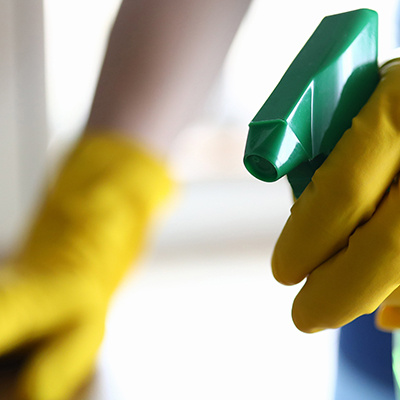
Step 2: Comprehensive Surface Cleaning Solutions
Dirty surfaces create ideal conditions for pathogenic microbes to survive and thrive – clean surfaces decrease pathogenic microbes and create a healthier building environment:
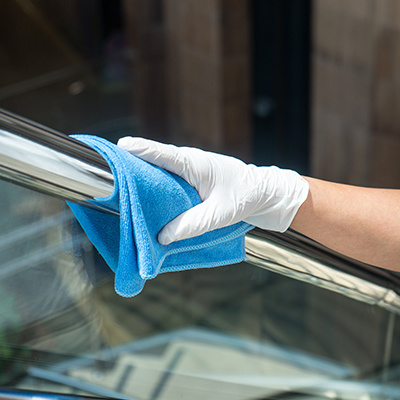
Step 3: High-Touch Surface Disinfecting Solutions
High-touch surfaces are a potential source for pathogen transfer to building occupants – targeted disinfection of high-touch surfaces will inactivate and suppress the growth of harmful pathogens and create a healthier building environment:
- Disinfectant Chemicals
- Disinfectant Wipes
- Cleaning Chemical and Disinfectant Dispensing Systems
- Disinfectant Applicators - Sprayers, buckets, wipes, misters, foggers, electrostatic sprayers
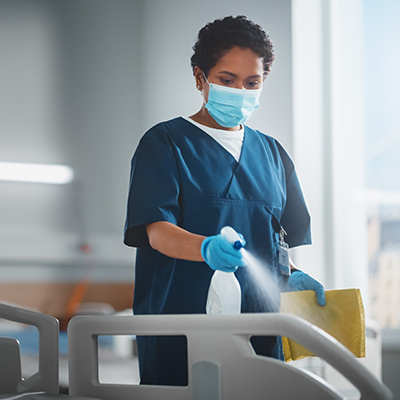
Step 4: Personal Protective Equipment (PPE) and Safety Solutions
Cleaning and disinfecting facilities results in opportunities for potential exposure to hazards – appropriate use of PPE will protect users against these health and safety risks, and create a healthier building environment:
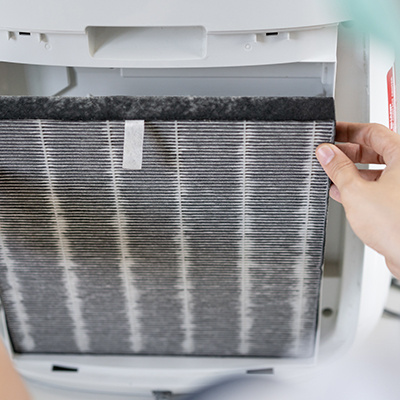
Step 5: Indoor Biological Pollutant Source Control Solutions
Other sources for indoor pollutants and pathogens can be found throughout a facility – identifying these sources and employing effective facility maintenance strategies can limit potential exposure to indoor pollutants and pathogens and create a healthier building environment:
- Entryway matting
- Waste, recycling & compost receptacles and liners
- Drain maintenance - bioactive chemistry and trap seals
- Indoor Air Quality (IAQ) - odor control, vent cleaning, air filtration and purification

Step 6: Cleaning Industry Expertise and Training Solutions
Misapplication and misuse of cleaning and disinfecting solutions can lead to ineffective results and even potential injury – partnering with a trusted adviser can help to optimize results and create a healthier building environment:
- Cleaning and disinfecting standard operation procedures
- Ongoing training support - on-site, in-class, online
- Signage and communication
- Cleaning Industry Expertise and Knowledge
Learn More About Facility Occupant Wellness Best Practices







